People
Studio Visit: Rising Textile Art Star Bisa Butler on How to Use Fabric Like Paint and the Kind of Art She Finds Irredeemably Boring
The New Jersey-based artist welcomes us into her studio to discuss what is inspiring her right now.
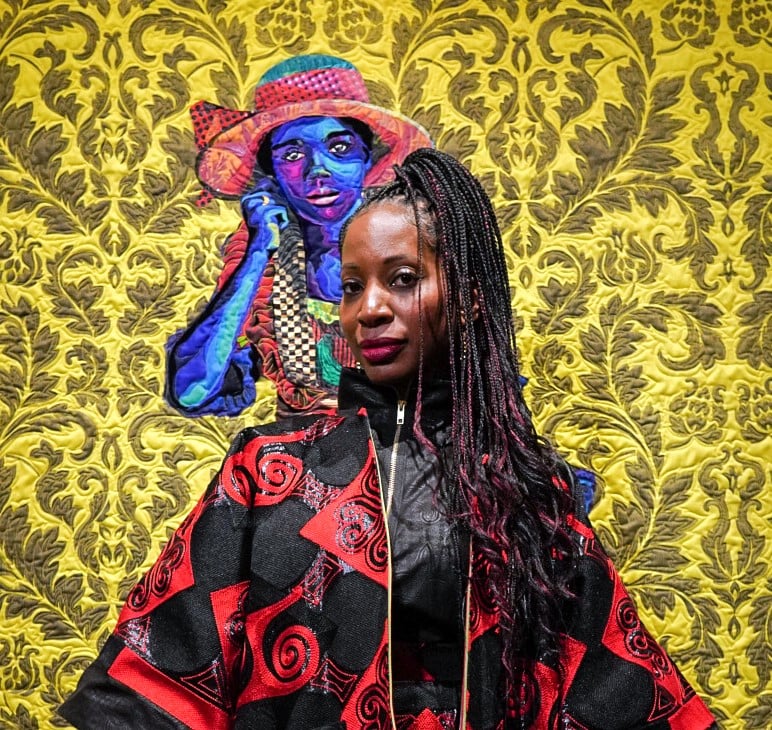
The New Jersey-based artist welcomes us into her studio to discuss what is inspiring her right now.

New Jersey-based fiber artist Bisa Butler has had a surprisingly eventful year. The artist, who creates brilliantly colorful, large-scale quilted portraits of African Americans, debuted a solo show at Harlem’s Claire Oliver Gallery in late February. Meanwhile, her first museum exhibition at the Katonah Museum of Art, which was scheduled for March, just recently opened to the public after lockdown. (After that, it will head to the Art Institute of Chicago, which recently acquired one of her works.)
For her part, Butler has spent the past few months working away in her studio and translating the antique black-and-white photographs of African Americans that inspire her into her kaleidoscopically colorful and intricately assembled quilts. Both a celebration of Black identity and the centuries-old African American tradition of quilt-making, her textile works can take hundreds of hours to create.
We recently caught up with Butler about life in the studio, her favorite curators, and why depicting a stylish pair of shoes particularly delights her.
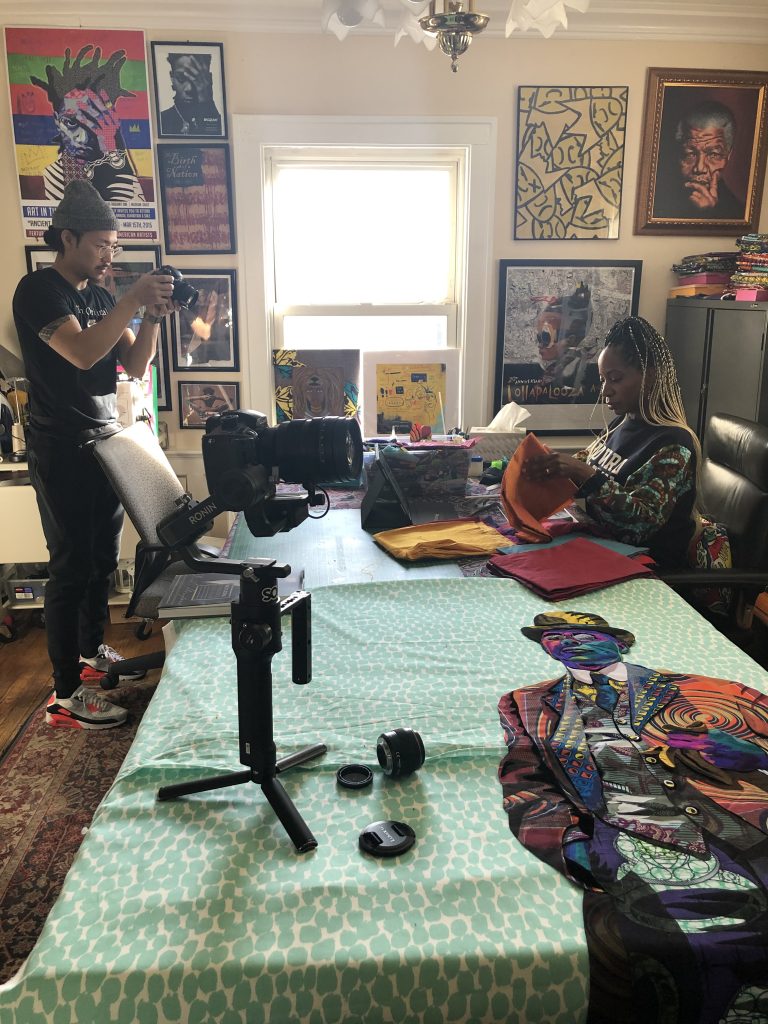
Bisa Bulter at work in her studio. Courtesy of the artist.
What are the most indispensable items in your studio and why?
My razor-sharp, micro-tip scissors; my fabrics; and my long-arm sewing machine, which I’ve nicknamed “The Beast.”
Sharp and tiny scissors are an absolute necessity for me—I use them like an artist uses a paintbrush. They can determine how precise my image looks, and the speed with which I can create it. A dull pair of scissors can make everything I cut out look raggedy and sloppy—a blurry line as opposed to a deliberate one. If I am stuck with a dull pair of scissors, I get so frustrated that I may not work at all.
My fabrics are my paints; they are what I use to create shapes and forms, express an idea and flesh out a portrait. I use silk, lace, velvet, and African and Dutch wax cottons. My silks shimmer and cast a mood. The wax print fabrics evoke history and in many cases carry names that refer back to African traditions, allegories, folk tales, historical events, and people.
“The Beast” is my 12-foot long-arm quilting machine. I just got it in May and it takes up an entire room. The Beast has allowed me to make my work bigger and has also allowed me to sew more freestyle.
Is there a picture you can send of your work in progress?
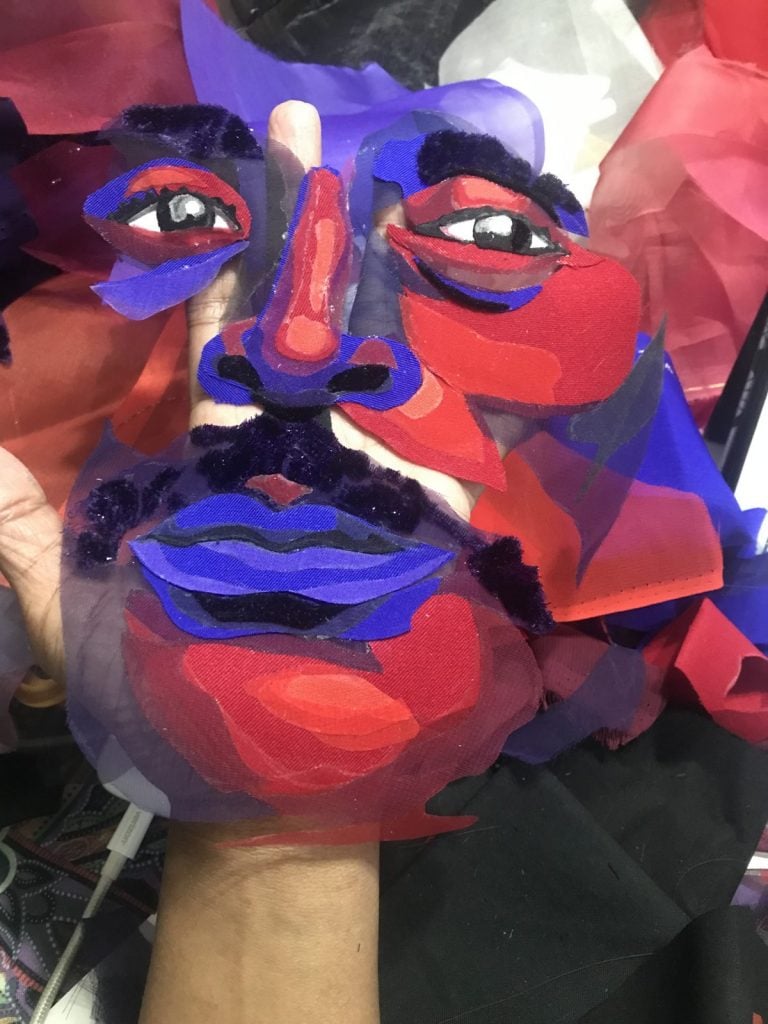
Bisa Butler’s in-progress A Man’s Worth (2020)
What is the studio task on your agenda tomorrow that you are most looking forward to?
I am most looking forward to creating a pair of high-heeled Oxford shoes out of Dutch wax cotton for the Grandma figure in my latest artwork. It may take me 10 to 12 hours to finish the shoes because they will be made up of hundreds of tiny pieces of fabric. When I finish a good pair of shoes, I feel so satisfied and I’m looking forward to that feeling. Sharp shoes are the icing on the cake for me.
What kind of atmosphere do you prefer when you work? Do you listen to music or podcasts, or do you prefer silence? Why?
While I’m working, I prefer to listen to podcasts or audiobooks or watch movies and YouTube. If it’s too silent, I get bored easily. Right now I’m listening to Claude Debussy, which I prefer if I am writing, or if I’m very stressed. My favorite song of his is “Reverie.” I just got finished listening to a playlist inspired by Chadwick Boseman on Tidal—there was a lot of James Brown and Kendrick Lamar on there. A song that really inspires me is “All The Stars” by Kendrick Lamar and SZA. SZA is from my hometown and we went to the same high school, 20 years apart.
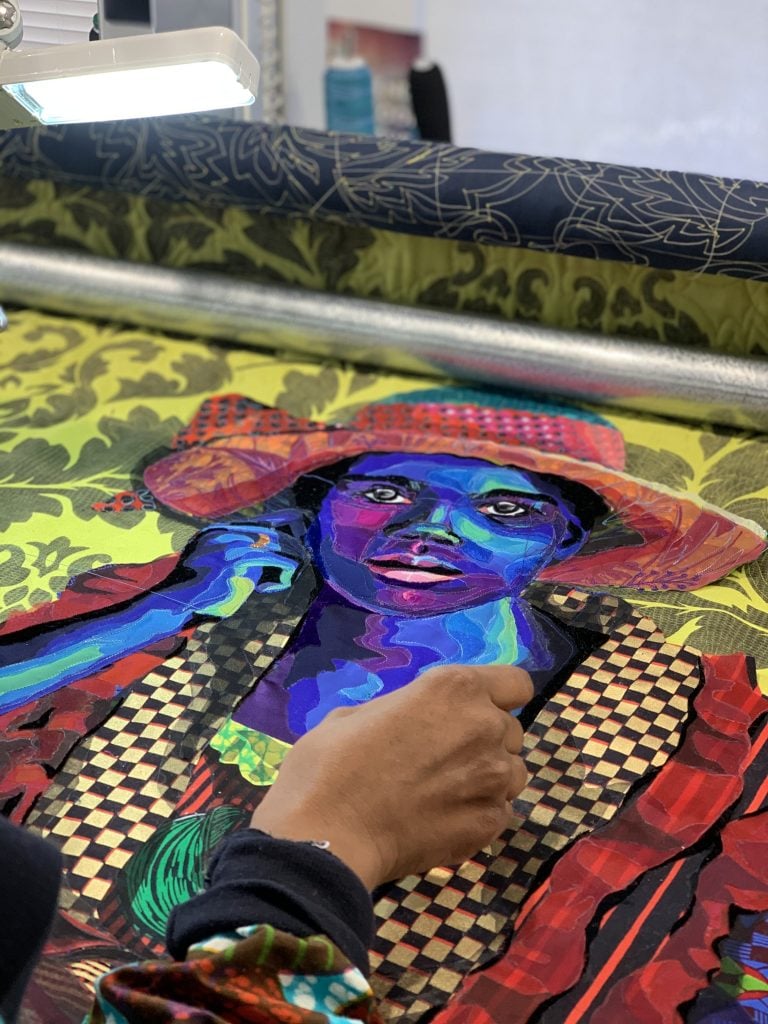
Bulter at work in her studio. Courtesy of the artist.
What trait do you most admire in a work of art? What trait do you most despise?
Beauty and the emotional and social connection an artwork can create. I can get lost in a Gordon Parks photograph, just imagining the lives of his subjects and enjoying the sheer beauty of his composition. The paintings of Amy Sherald I find striking and evocative; they entrance me.
Some artworks are just too simplified for me. I am not a fan of big, primarily blank canvases with one line on them. They bore me instantly and I usually don’t even care to read the statement.
What snack food could your studio not function without?
I have a hard time functioning in my studio without my sparkling water—Perrier in a cold glass bottle is essential. Late at night, I have to have a nice warm cup of herbal tea and honey to keep me going.
Pringles potato chips are my guilty pleasure, but if they are not in front of me, they are out of mind.
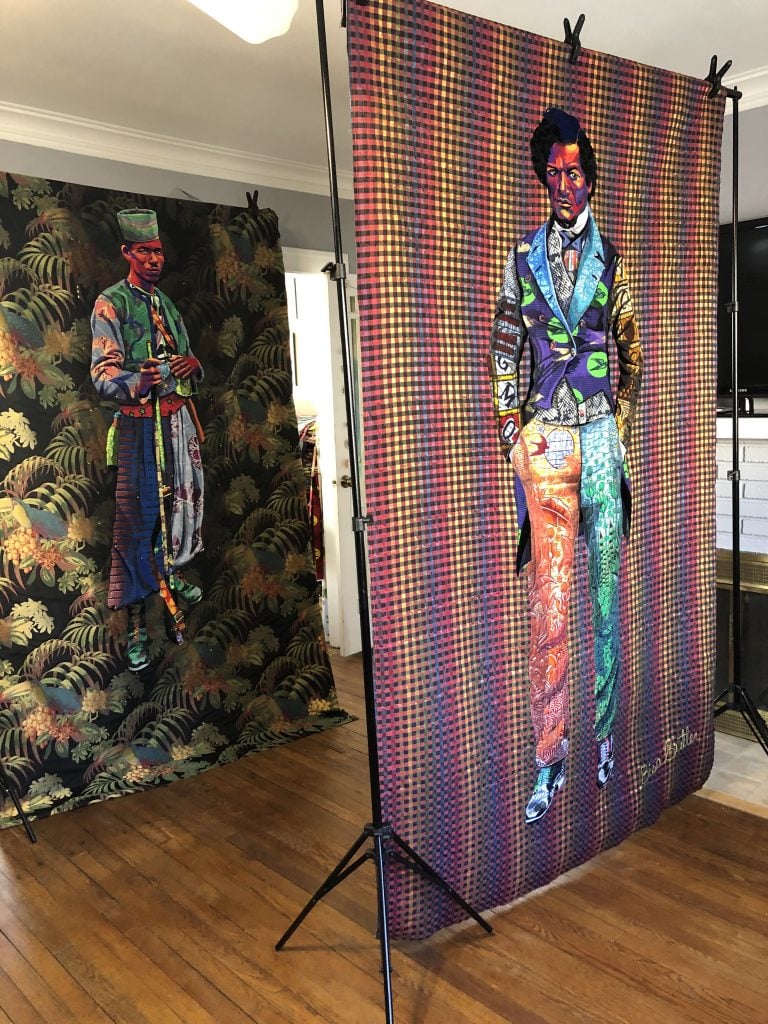
Studio view, courtesy of the artist.
Who are your favorite artists, curators, or other thinkers to follow on social media right now?
My favorite artists right now include Adebunmi Gbadebo, who makes incredible artworks sculpted out of African American hair, the one-and-only Faith Ringgold, Deborah Roberts, Ebony Patterson, and Shawn Theodore.
The curators who really impress me are Thelma Golden, Ashley James (the first African American curator at the Guggenheim), Larry Ossei-Mensah, Naima Keith, Destinee Ross Sutton (who is only 25), and Michele Wije and Erica Warren, who curated my very first museum exhibits at the Katonah Museum of Art and the Art Institute of Chicago, respectively. Erica and Michele made me see my work in a whole new light and inspire me to reach for new heights.
Some incredible thinkers and activists that inspire me are Kimberly Drew, Tamika D. Mallory, Kimberly Latrice Jones, and Nikole Hannah-Jones. Reading what they write and listening to them speak puts the fire in my veins.
When you feel stuck in the studio, what do you do to get un-stuck?
I look for inspiration in music, film, art, and even the news. I do a number of things: listen to speeches by James Baldwin, watch Kerry James Marshall speak about his work, go to art exhibits, watch a documentary on a social activist, or even just watch a movie that is fun. Talking to my friends and family can get me out of a funk because they listen to me and they have great suggestions.
What is the last exhibition you saw (virtual or otherwise) that made an impression on you?
The last exhibit that I went to that blew me away was the Charles White exhibit at MoMA. He is an art hero of mine and I look up to his incredible work and the fact that he succeeded in a time of segregation and oppression. A virtual exhibit that I attended and was amazed by was the work of Latoya Hobbs who just won the Janet and Walter Sondheim Artscape Prize.

Butler bases her quilts on black-and-white photographs of African Americans which she has come across over the years.
If you had to put together a mood board, what would be on it right now?
My mood board would consist of the images that are inspiring my next body of work. I have tons of vintage photographs of unnamed and named African Americans saved on my phone that I am itching to create artworks of. Nearly every photo would be in black-and-white because that is what I love to look at—I like to reimagine the world in my own color scheme. I would also have pieces of fantastic prints that I either want to buy or make myself. I love fashion so there would be a bunch of incredible floaty chiffon gowns on there, too.